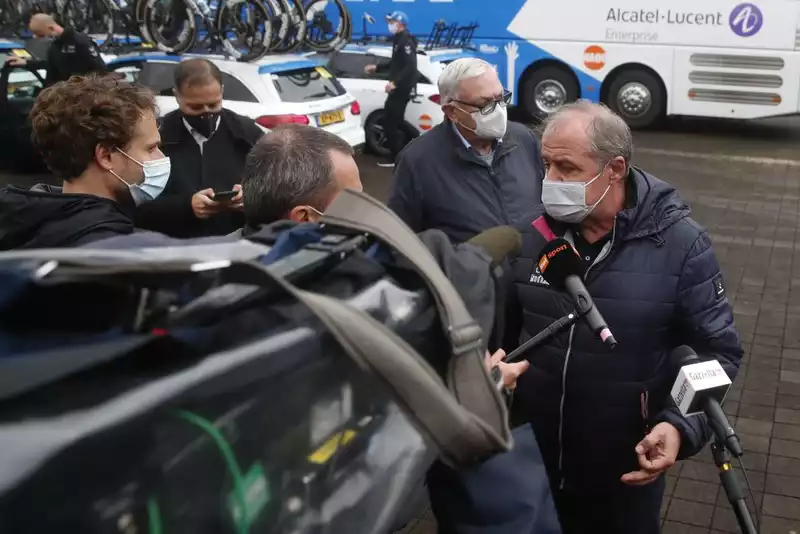Mauro Veni, director of the Giro d'Italia, was angered by the riders' protests over the shortening of stage 19 by 134 km, calling the decision "unacceptable" and claiming that he had not received the request to shorten the stage until Friday morning, just before the start in Morbegno He claimed.
The stage was supposed to be approximately 258 km long, but just before the start, the riders notified Veni of the shortened distance. He claimed that racing for six hours in the incessant rain was a health risk at this stage of the Giro.
After a compromise was reached, the 134 riders remaining in the Giro rode at a soft pace for the first 8 km of Friday's route, then boarded team buses and rode to Abbiategrasso near Milan, where a revised 124 km stage began just after 2:30 pm local time.
"It is an unacceptable decision and one that I will have to endure," Veni told RAI after the stage started in Abbiategrasso. Now I am thinking about going to Milan, but then someone else will have to pay for this."
." I regret giving a bad impression today as a sport and I can say that today's bad numbers have overshadowed all the good work we have done so far to finish the Giro in Milan."
In a statement on social media, the athletes' association CPA argued that shortening the length of stage 19 would "ensure that the riders' immune defenses are not put at greater risk."
Adam Hansen (Lot Soudal) wrote that the request to shorten the stage was made on Thursday evening, which Veni refuted. It was later revealed that a team representative had requested the stage shortening in a 16-2 CPA Telegram chat.
"Neither yesterday nor this morning have we received any request from any rider or from any association," Veni said, but reiterated the point more strongly in an interview with La Gazzetta dello Sport: "Those who wrote that there was a proposal earlier this morning must prove it. Otherwise they will receive a letter from our lawyers."
Veni also noted that the weather conditions on the road to Asti were not sufficient to trigger the UCI extreme weather protocols that allow for shorter race times in response to freezing rain, snow on the roads, high winds, extreme temperatures, poor visibility, and air pollution.
"They knew the distance, they knew the Giro would be held in October, and in October the temperature at the start of the Giro was 13 degrees, with some rain," Veni said. 'It didn't seem like dramatic weather to me.'
Concerns about rider welfare have long been noted at this Giro, including a crash on stage 4 in which a low-flying TV helicopter blew a barrier onto the road, forcing Luca Wackermann (Vini Zabou Blado-KTM) to retire.
Mitchelton Scott and Jumbo Visma withdrew from the Giro before stage 10 due to confirmed coronavirus cases on their team, and EF Pro Cycling, concerned about the coronavirus bubble in the event, called for the race to end within two weeks EF's request was rejected by the UCI.
CPA president Gianni Bugno, who was attending the Giro as a co-commentator for host broadcaster RAI, acknowledged during his coverage of Friday's stage that the weather was not good enough to trigger the UCI protocol, but insisted that protecting the peloton's health was the top priority.
"Obviously the conditions did not fall under the extreme weather protocol. The weather was bad, they had been facing testing conditions for the last two days, it was a 250 km travel stage, and the weather was not good. Probably some of the riders started talking last night, and when our representative, Cristian Salvato, found out, he went to the chief commissaire and the race organizers to ask them to shorten the stage," Bugno said.
"Then the protests started and that caused problems. I apologize to the organizers of the Giro d'Italia, the viewers at home, and the fans along the road, but the important thing was to protect the health of the riders who had given their all."
.

Comments